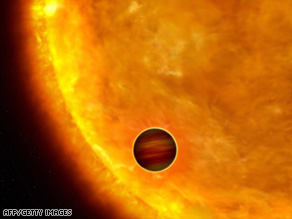As NASA prepares to hunt for Earth-like planets in our corner of the Milky Way galaxy, there's new buzz that "Star Trek's" vision of a universe full of life may not be that far-fetched.

An artist's impression shows a planet passing in front of its parent star. Such events are called transits.
Pointy-eared aliens traveling at light speed are staying firmly in science fiction, but scientists are offering fresh insights into the possible existence of inhabited worlds and intelligent civilizations in space.
There may be 100 billion Earth-like planets in the Milky Way, or one for every sun-type star in the galaxy, said Alan Boss, an astronomer with the Carnegie Institution and author of the new book "The Crowded Universe: The Search for Living Planets."
He made the prediction based on the number of "super-Earths" -- planets several times the mass of the Earth, but smaller than gas giants like Jupiter -- discovered so far circling stars outside the solar system.
Boss said that if any of the billions of Earth-like worlds he believes exist in the Milky Way have liquid water, they are likely to be home to some type of life.
"Now that's not saying that they're all going to be crawling with intelligent human beings or even dinosaurs," he said.
"But I would suspect that the great majority of them at least will have some sort of primitive life, like bacteria or some of the multicellular creatures that populated our Earth for the first 3 billion years of its existence."









No comments:
Post a Comment